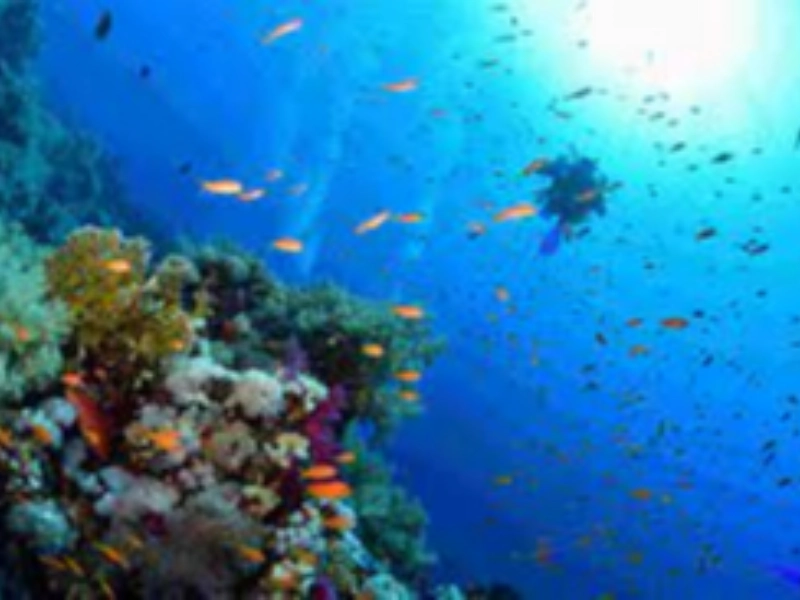Adventures with Cave Diving
Worldwide, karst zones with soluble limestone and gypsum formations are home to caves. Although caves can be found in Florida, Hawaii, and the Bahamas, the Yucatan Peninsula in Mexico is home to the most well-known ones.
The experience of diving in a cave differs greatly from that of open-sea diving. It calls for picking up specialised abilities, such as locating a reference point in zero sight and honing new kicking and gas management procedures.
How it functions

Scuba divers may explore some of the planet's most breathtaking natural treasures by going cave diving. These unique marine life-rich deep-ocean structures offer an experience that is unmatched by any other.
Scuba divers need specialised equipment and intensive training to explore caves. This usually consists of a backup air supply, a guide line, and a rebreather device.
A dive team's leader is positioned in open water between a location outside the cave mouth and a guide line. Inside the cave zone, this wire is frequently tied off a second time as a backup.
In the event of an emergency, such as a gas shortage or a silt-out that impairs sight, this line helps guarantee a safe return to the surface. Before going into another area of the cave, the cave diver must ensure that the temporary line is recovered when they surface.
Tools

Cave diving is an exhilarating sport that requires certain gear and instruction. It also calls for a high level of situational awareness and the capacity to react to any risks when diving.
Divers that enter caves should be ready for a number of difficulties, including restricted air supplies, the chance of getting lost in a labyrinth of pathways, and the potential for nitrogen narcosis. Divers must always dive with a buddy and within their comfort zone in order to reduce these risks. In the event of an emergency, they ought to know what to do and know how to get out.
The usage of a guide line, which is a continuous line that connects the dive team leader to a point chosen outside the cave entrance in open water, is another crucial component of cave diving. When sight is impaired due to silt, this navigation aid is employed to guide one to an escape. The line is also used to track gas usage and check depth.
Security

Cave diving is an extremely complex sport that calls for a great deal of skill and training. Although cave diving is an exciting and demanding sport, most accidents are the result of someone pushing themselves too far. Because of this, divers should constantly plan ahead and account for unforeseen circumstances while planning their dives. In addition, they need to be able to identify and treat nitrogen narcosis, select a gas mixture suitable for the dive, and closely examine the surrounding conditions.
Using a guideline, which is fastened outside the cave and within close to the entrance, is an essential safety precaution. If your lights go out or a silt-out damages your visibility, this can help you get to the surface. In the event of an issue, you can use it as a tool to locate the exit or as a marker to monitor your progress throughout a lengthy dive.
You will get knowledge on how to set up and operate penetration lines throughout the entire cave diving training. Additionally, you will learn how to navigate in an overhead environment and acquire specific finning skills to prevent agitating sediment. Additionally, you will learn about emergency protocols and how to handle malfunctioning equipment.
Getting Ready

Scuba diving with a focus on exploring underwater caves and subterranean passageways is known as cave diving. Although it's a fascinating and demanding endeavour, it's also very risky, which is why the right training and certificates are needed for such an undertaking.
A diver must have the standard equipment for scuba diving in addition to being educated to navigate in a restricted overhead environment and knowledgeable about the various risks unique to this kind of research, such as gas management. The "rule of thirds" is applied by divers in cave environments where sunlight may not be sufficient for navigation. Specifically, divers will use 30% of their oxygen supply during their descent, an additional 30% during their ascent back to the surface, and the remaining third for emergencies or backup navigation.
Divers must also master various kicking manoeuvres, including flutter and frog kicks, to prevent kick-up sediment that might obstruct vision. You can also use dorf markers, tiny plastic arrows, and clothespin-like clips to mark significant spots along the cave's lines for navigation.









